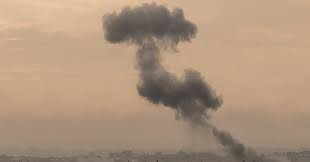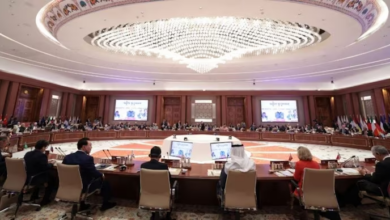How the Houthis of Yemen Are Getting Into the Israel-Hamas Conflict Will Make Middle East Tensions Worse
The Houthi rebels in Yemen have formally declared their involvement in the present Israel-Hamas conflict, claiming that they have begun using drones and ballistic missiles to strike Israeli positions in support of Palestine.
Houthi spokesman Yahya Saria was described by The Times of Israel as claiming that there was a “sense of religious, moral, humanitarian, and national responsibility for the people of Gaza, who face a rising humanitarian crisis due to Israeli bombardment” behind the aerial strikes.
On Tuesday, the Israeli Arrow-3 anti-ballistic missile system foiled a Houthi missile strike on Israel.
It was widely expected that the Houthis will get involved in the current Israel-Hamas conflict, which might raise tensions across the Middle East. Even if the Houthis have weapons that can reach Israel, it’s unlikely that they can get past Israel’s sophisticated air defenses.
Prime Minister Benjamin Netanyahu charged Iran on Monday in Jerusalem of being ready to fire precision-guided missiles at Israel from Yemen. Iran intends to strike Israel with precision-guided and statistical missiles, using Iran, Iraq, Syria, Lebanon, and Yemen as bases. He had said, “That poses an enormous risk.”
Houthis have a reputation for fighting the Saudi-led coalition in the area and are said to have strong ties to and support from the Iranian government. Their main focus has been to combat the opposing Iranian coalition in the area, which is supported by the US and Israel and is commanded by Saudi Arabia and the United Arab Emirates.
The Houthis have recently launched many attacks on energy assets located deep into Saudi Arabian and UAE territory. Their most recent declaration may include other regional participants in the Israel-Hamas conflict.
“The Houthis have conducted attacks on commercial shipping in the Red Sea using waterborne improvised explosive devices and sea mines,” according to a UN Security Council report from 2022. Furthermore, they are being held accountable for the “repeated cross-border terrorist attacks striking civilians and civilian infrastructure” that have occurred in the UAE and Saudi Arabia.
Those who are hunches?
Originally called “Ansar Allah” (Supporters of God), the Houthis emerged as a Shia ideological movement led by Hussein Badreddin al-Houthi in the 1990s. They mostly support the Zaidi branch of Shia Islam. Their original goal was to protect Zaidi Shia rights against alleged outside influences, particularly the spreading doctrine of Sunni Wahhabis. But as the years went by, their aspirations expanded, and they became important Yemeni political players rather than just sectarian protectors.
HAMILTON’S ASCENT TO POWER
The Houthis swiftly pushed and took control of Yemen’s capital, Sana’a, in 2014 after taking advantage of the country’s political unrest after the 2011 Arab Spring. As a result, the rebel militia organization in Yemen became a powerful political force. They also own Hodeida, a vital port city on the Red Sea, giving them economic and military might. They also have command over Yemen’s hazardous northern mountains, which provides them with a natural defensive advantage and makes it difficult for enemy troops to undertake effective offensives against them.
THE MILITARY MAY
With a wide variety of weapons, including drones and ballistic missiles, the group’s military prowess has significantly increased. Armed with weaponry taken from the 2014 coup in Yemen and supplied from Iran, the Houthis have set their sights on targets as far away as 1,300 kilometers, such as Riyadh and Abu Dhabi. They are said to have missiles with a 2,500 km range, which is sufficient to hit several Israeli towns located in their stronghold, Sana’a. They have already carried out operations that penetrated far into Saudi territory and affected world oil prices by attacking significant oil infrastructure. Furthermore, they have strengthened their hold on strategic Yemeni districts with an estimated tens of thousands to over 100,000 soldiers, including local tribesmen and defected military forces.







